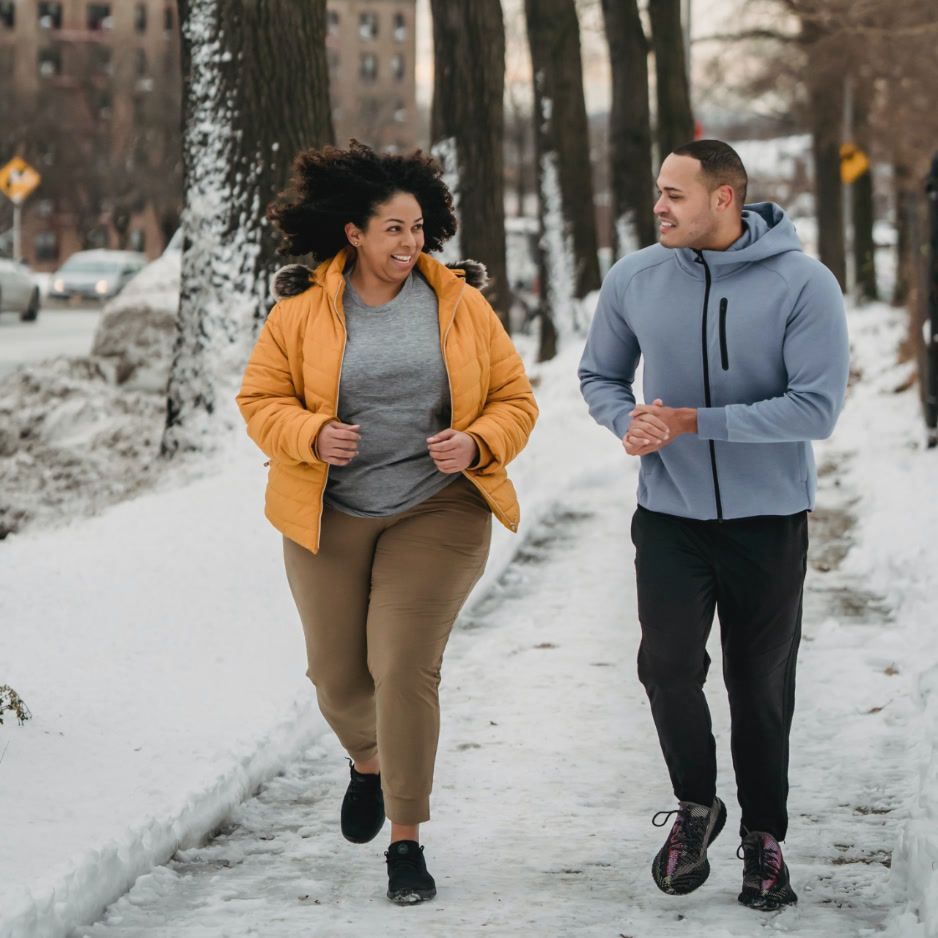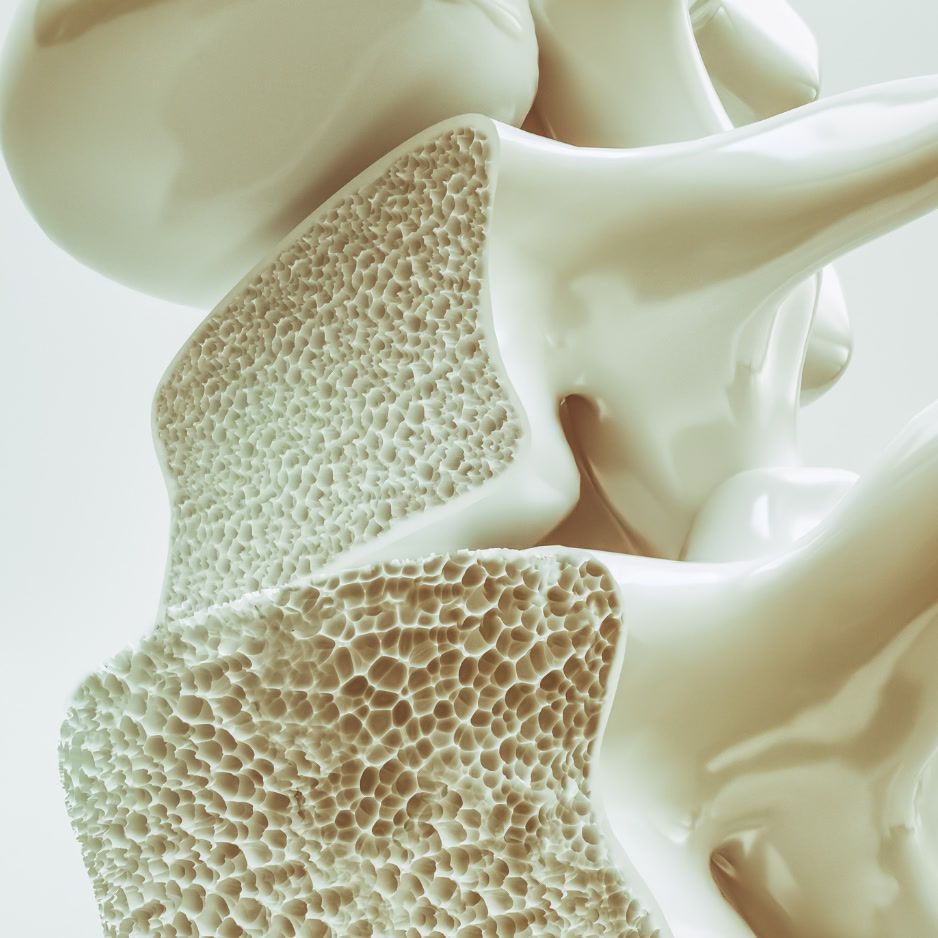Bone Densitometer: Guide to DXA, Ultrasound & QCT
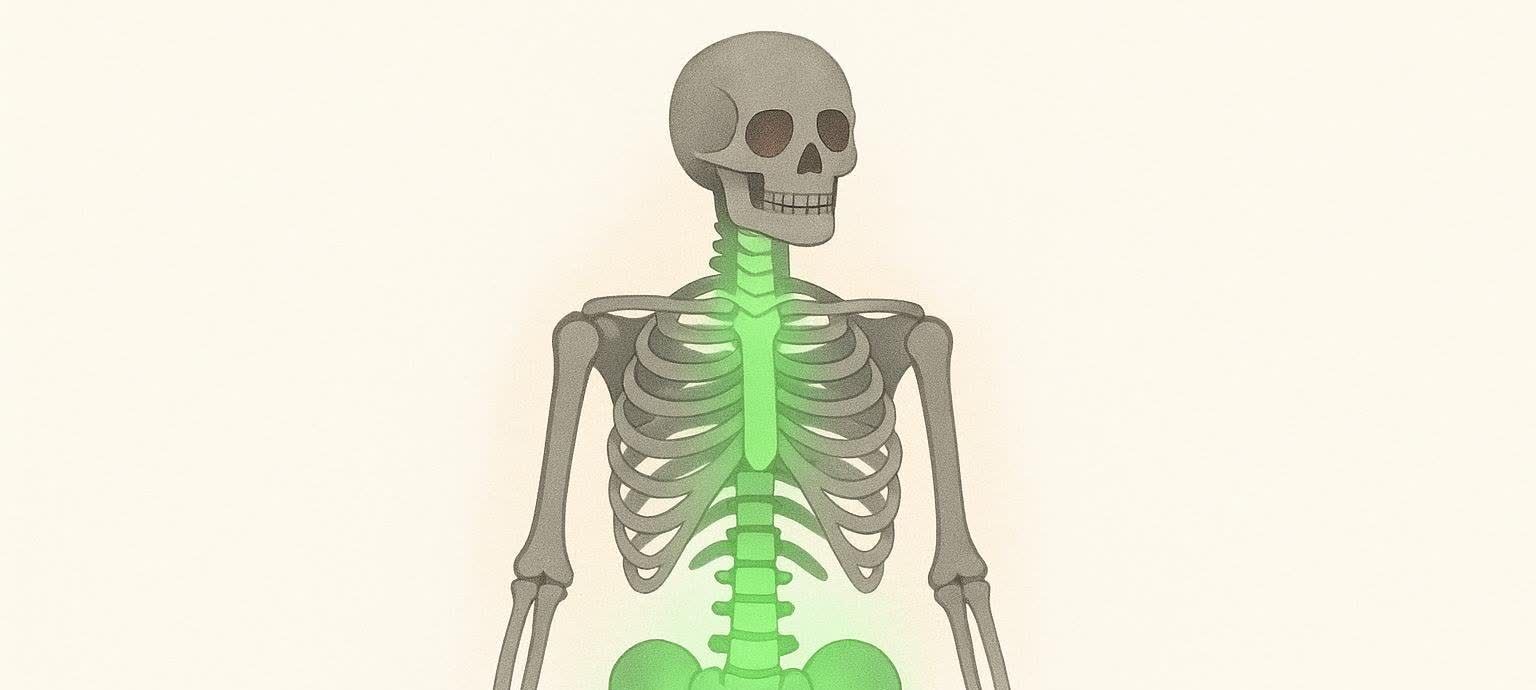
Bone Densitometer: A Guide to DXA, Ultrasound & QCT
Choosing a bone densitometer—and understanding which scan your doctor recommended—doesn’t have to be complicated. This guide delivers quick answers, clear comparisons, and credible sources so you can make a confident decision, whether you’re a clinician, researcher, or an individual planning a scan.
TL;DR
- What it is: A bone densitometer measures bone mineral density (BMD) to assess osteoporosis risk.
- Best for diagnosis/monitoring: Central DXA of the hip and spine—accurate, fast, and very low dose.
- Portable screening: Ultrasound (QUS) at the heel can screen and triage but isn’t a replacement for central DXA.
- 3‑D detail or special cases: Quantitative CT (QCT) offers volumetric data at a higher dose/cost.
- BodySpec note: We provide non‑diagnostic, whole‑body DXA for wellness and body‑composition tracking. If your bone density measurement appears low, bring your report to your doctor for a diagnostic hip/spine DXA.
Quick definition: what is a bone densitometer?
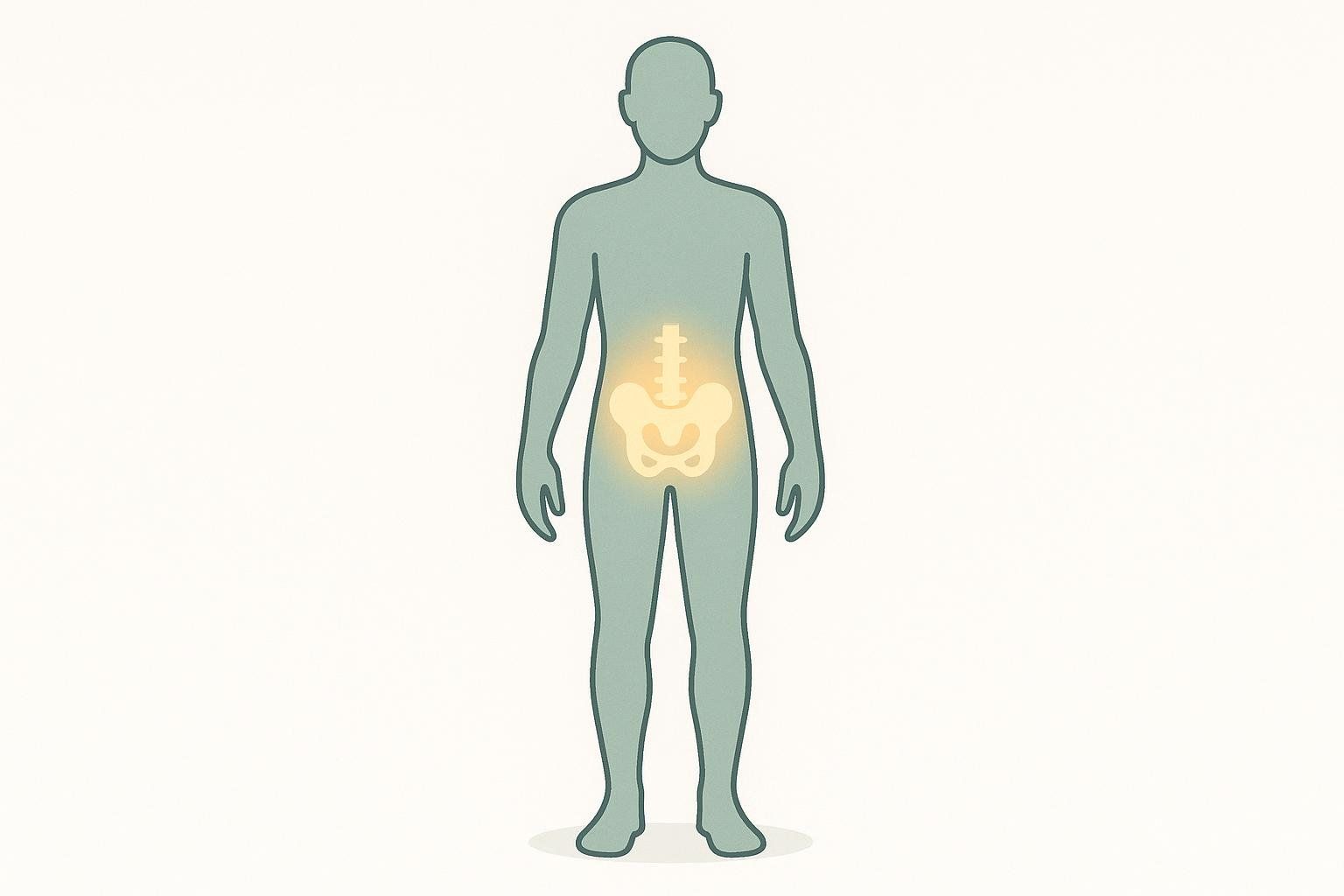
A bone densitometer estimates bone mineral density (BMD) to help assess fracture risk and monitor bone health. In medical practice, central DXA (hip and spine) is the standard method because it’s accurate, quick, and very low in radiation dose. Peripheral devices and ultrasound are helpful for screening, but aren’t used to diagnose or monitor therapy (Mayo Clinic; Johns Hopkins). You can learn more about these scores in our complete guide to interpreting DXA results.
Diagnostic vs. non‑diagnostic DXA
| Feature | Diagnostic Central DXA (Hip/Spine) | BodySpec Whole‑Body DXA |
|---|---|---|
| Purpose | Medical diagnosis and monitoring (osteopenia/osteoporosis) | Wellness tracking of body fat, lean mass, and a non‑diagnostic bone estimate |
| Regions | Hip + spine (sometimes forearm) | Entire body (includes hips/spine in the image) |
| Can diagnose? | Yes (physician‑ordered) | No (screening‑level info only) |
| Insurance | Often covered when medically indicated | Typically cash pay (FSA/HSA eligible) |
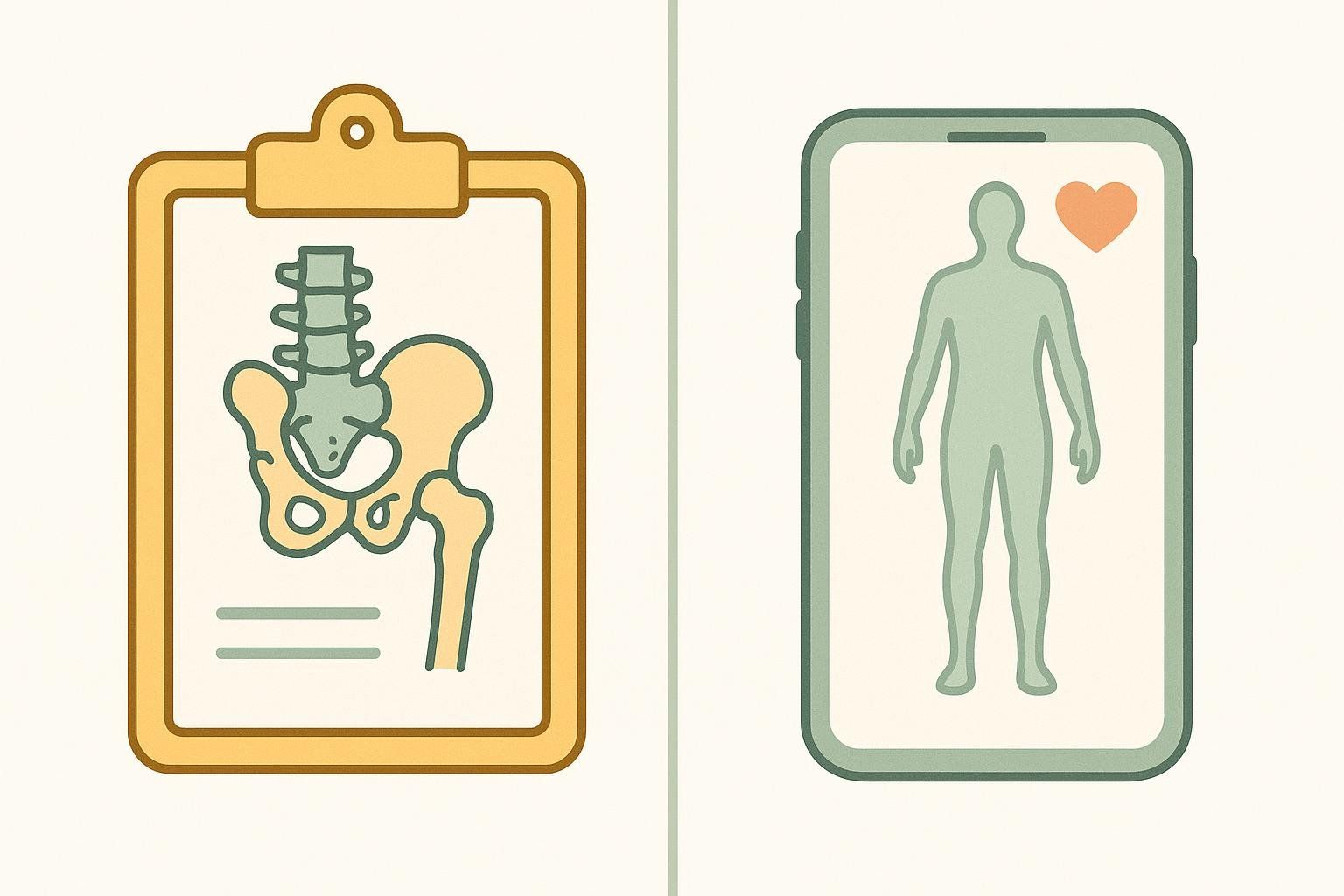
Tip: Use BodySpec’s whole‑body DXA as an early‑detection snapshot, then confirm with a diagnostic hip/spine DXA if needed.
The main technologies (and how they differ)
1) Central DXA (hip/spine) — clinical gold standard
- How it works: A DXA bone densitometer passes two low‑dose X‑ray energies through bone and soft tissue to quantify mineral content at the lumbar spine and hip (IAEA primer).
- Best for: Diagnosing osteoporosis, estimating fracture risk, and monitoring therapy with T‑ and Z‑scores.
- Dose & time: Extremely low radiation; a typical exam takes about 10–30 minutes (Mayo Clinic).
2) Quantitative ultrasound (QUS) — radiation‑free screening
- How it works: Ultrasound at the heel (or another peripheral site) estimates bone properties related to density/structure.
- Accuracy and use case: A 2012–2022 review found that heel QUS can help prescreen for low BMD and predict fractures, but accuracy varies by device and it’s not interchangeable with DXA.
- Use case: Portable screening and fieldwork; refer abnormal screens to central DXA.
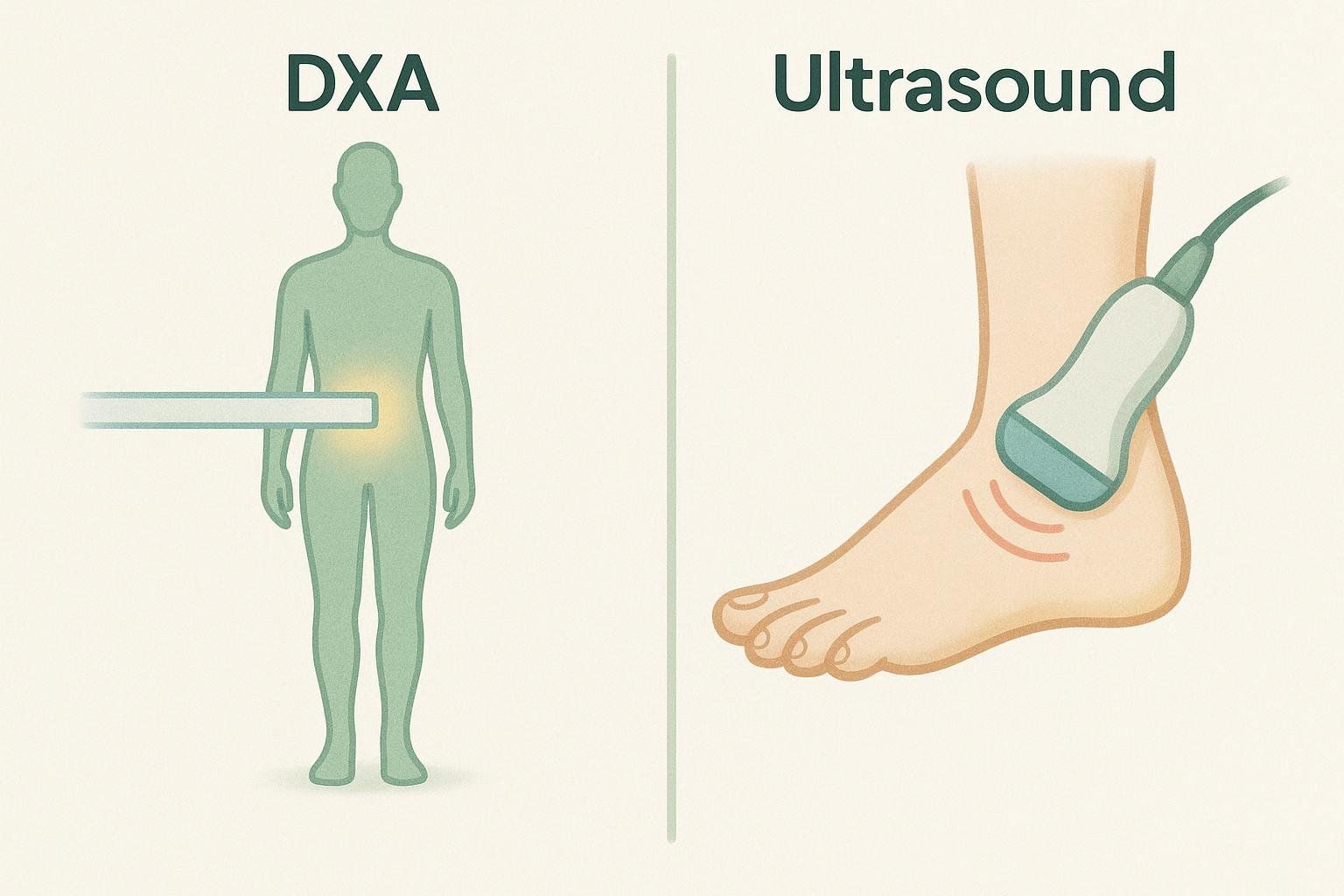
3) Quantitative CT (QCT) — 3‑D density with higher dose
- What it adds: Volumetric BMD and separation of cortical vs. trabecular bone.
- Trade‑offs: Higher radiation and cost vs. DXA; used in select clinical situations (Mayo Clinic).
4) Emerging 3D‑DXA and advanced DXA features
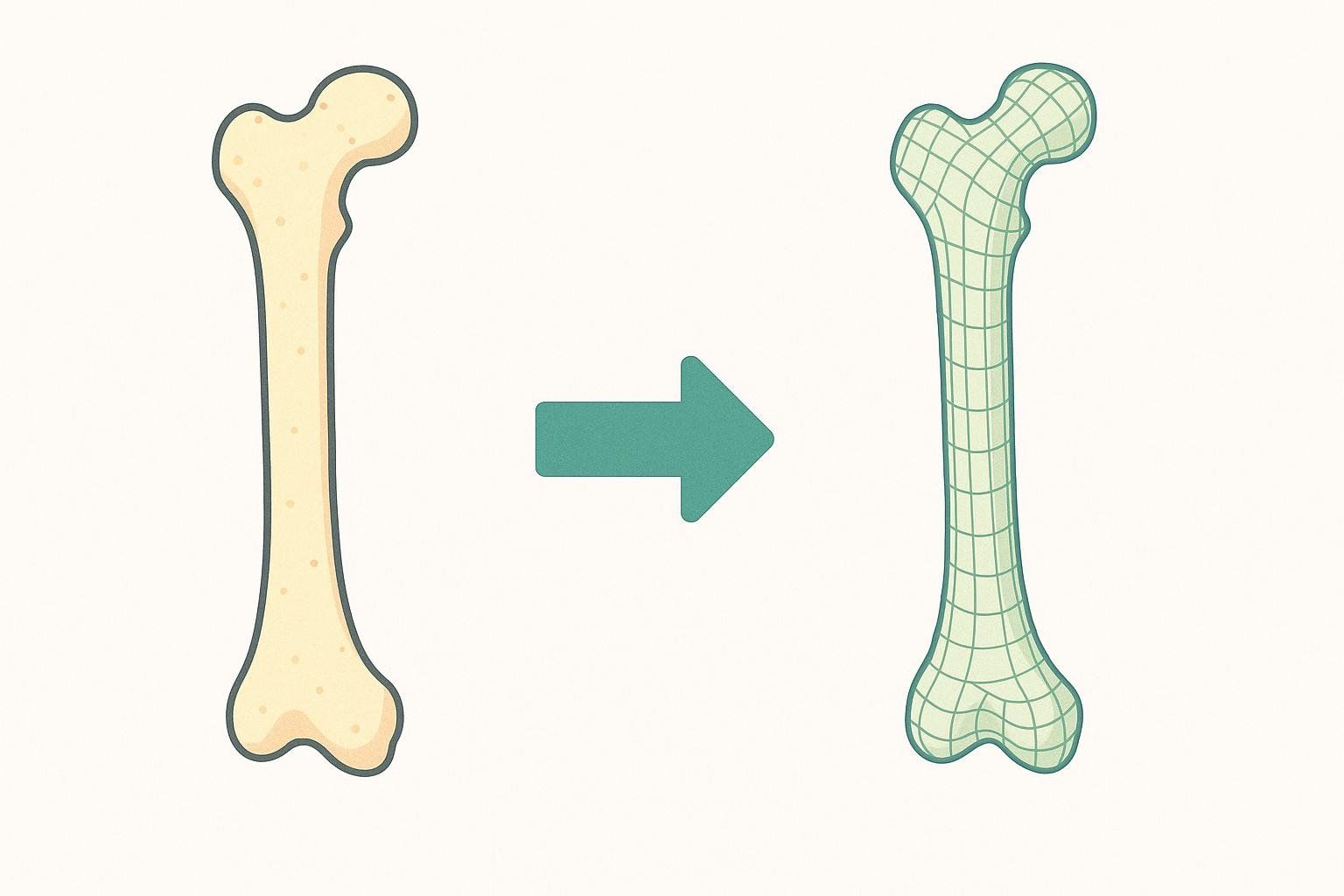
- 3D‑DXA: Software reconstructs 3‑D femur geometry from standard DXA images to add biomechanical insights; vendors validate these reconstructions against CT scans to demonstrate biomechanical accuracy (DMS Imaging).
- Common DXA add‑ons (model‑dependent): Vertebral Fracture Assessment (VFA), Abdominal Aortic Calcification (AAC) visualization, and advanced body composition including visceral adipose tissue (VAT) estimates (Hologic Horizon features).
DXA vs ultrasound vs QCT: vendor‑neutral comparison
| Dimension | Central DXA (hip/spine) | Quantitative Ultrasound (heel/peripheral) | Quantitative CT (QCT) |
|---|---|---|---|
| Primary use | Diagnosis, risk stratification, therapy monitoring | Screening, triage, portability | Select cases needing volumetric data |
| Accuracy for osteoporosis diagnosis | High; standard of care | Moderate correlates with DXA but not interchangeable | High for volumetric measures |
| Radiation | Very low | None | Higher than DXA |
| Typical exam time | ~10–30 min | Minutes | ~15–20 min |
| Best setting | Clinics/hospitals, specialty practices | Community screening, primary care triage, research fieldwork | Radiology departments |
| Monitoring therapy | Yes | No (not recommended) | Select cases |
For a patient‑friendly overview, see A Guide to Bone Density Testing.
Who uses bone densitometers—and for what?
- Primary care and specialty clinics: Diagnose osteopenia/osteoporosis, determine fracture risk, and monitor therapy; many incorporate VFA and use tools like the FRAX tool (Mayo Clinic; Johns Hopkins).
- Population screening and wellness: Community programs use peripheral devices or ultrasound for triage, then refer positives to central DXA.
- Research labs: Central DXA for precise longitudinal change; portable ultrasound for field studies; some groups explore 3D‑DXA for biomechanics (systematic review of heel QUS; DMS Imaging). To decide when to refer for diagnostic testing, review When Should Women Get a Bone Density Test?.
Safety, dose, and patient experience
- Radiation safety: DXA uses extremely low radiation—roughly comparable to everyday background exposure (IAEA). Ultrasound has none.
- Time & comfort: Noninvasive; you lie on a padded table; most central DXA exams take 10–30 minutes (Mayo Clinic).
- Preparation tips: Skip calcium supplements for 24 hours. Inform the technologist about any recent barium or contrast studies, as they can interfere with the results (Mayo Clinic). For a deeper dive on safety, see Is a DEXA Scan Safe?.
Understanding results: T‑scores, Z‑scores, and fracture risk
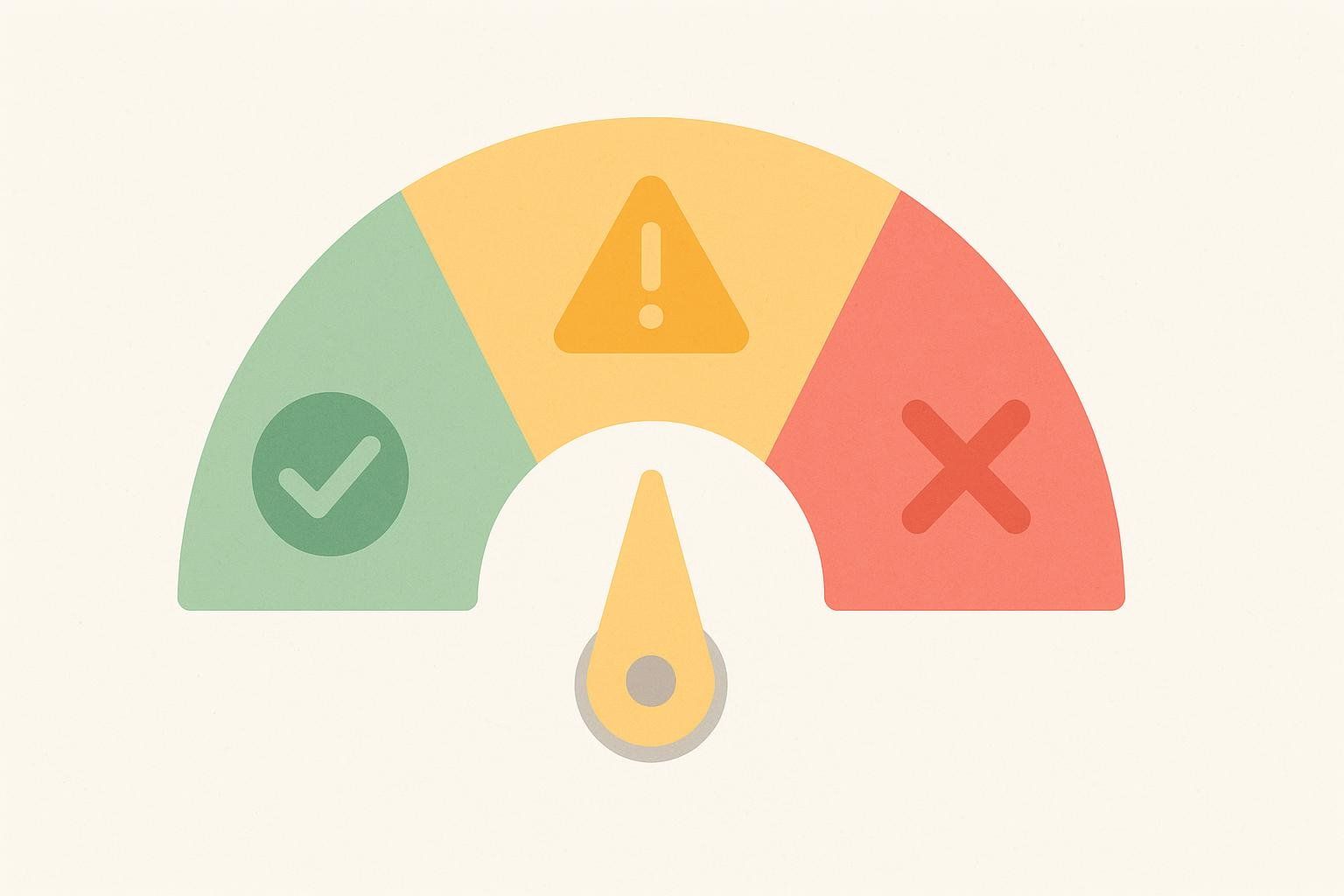
- T‑score (diagnostic DXA): WHO categories—normal (≥ −1.0), low bone mass (−1.0 to −2.5), osteoporosis (≤ −2.5) (Johns Hopkins).
- Z‑score: Compares you to age‑matched peers; very low Z may prompt a search for secondary causes.
- How BMD relates to fracture risk: Fracture risk roughly doubles for each Standard Deviation (SD) drop below the young‑adult average (Johns Hopkins).
If you want to understand how clinicians combine BMD with risk factors, explore How to Use FRAX.
Buying guide: how to choose a bone densitometer (clinic or research)
- Define the primary use case
- Diagnostic osteoporosis care → central DXA with hip/spine capability and ISCD‑aligned reporting.
- Screening/triage or remote sites → portable ultrasound or peripheral devices, with a clear referral pathway to central DXA.
- Research with musculoskeletal/metabolic endpoints → central DXA with body composition and VAT; consider 3D‑DXA for femur geometry.
- Prioritize accuracy, precision, and QA
- Look for daily phantom calibration, drift detection, and cross‑calibration support; the International Society for Clinical Densitometry (ISCD) emphasizes standardized positions (ISCD Official Positions).
- Validate test‑retest precision and document least significant change (LSC)—critical for monitoring.
- Evaluate radiation and workflow
- DXA dose is already very low. Focus on workflow efficiency (throughput), with exam times often 10–30 minutes. Consider add‑ons like VFA and AAC when relevant.
- Consider features and software ecosystem
- VFA, AAC, whole‑body composition with VAT, HL7/DICOM integration, cybersecurity documentation, and EHR workflows (see vendor conformance statements; example: Hologic Horizon features).
- If exploring 3D‑DXA, review validation data and regulatory status (e.g., DMS Imaging).
- Budget for total cost of ownership (TCO)
- Hardware + service, software options (VFA, composition, 3D‑DXA), technologist training, and room shielding (usually minimal for DXA). Reimbursement and frequency limits vary by payer.
- Training and credentials
- Align protocols with ISCD positions; consider technologist certification or vendor‑led training for consistent positioning/analysis (ISCD Official Positions).
Implementation checklist (for clinics)
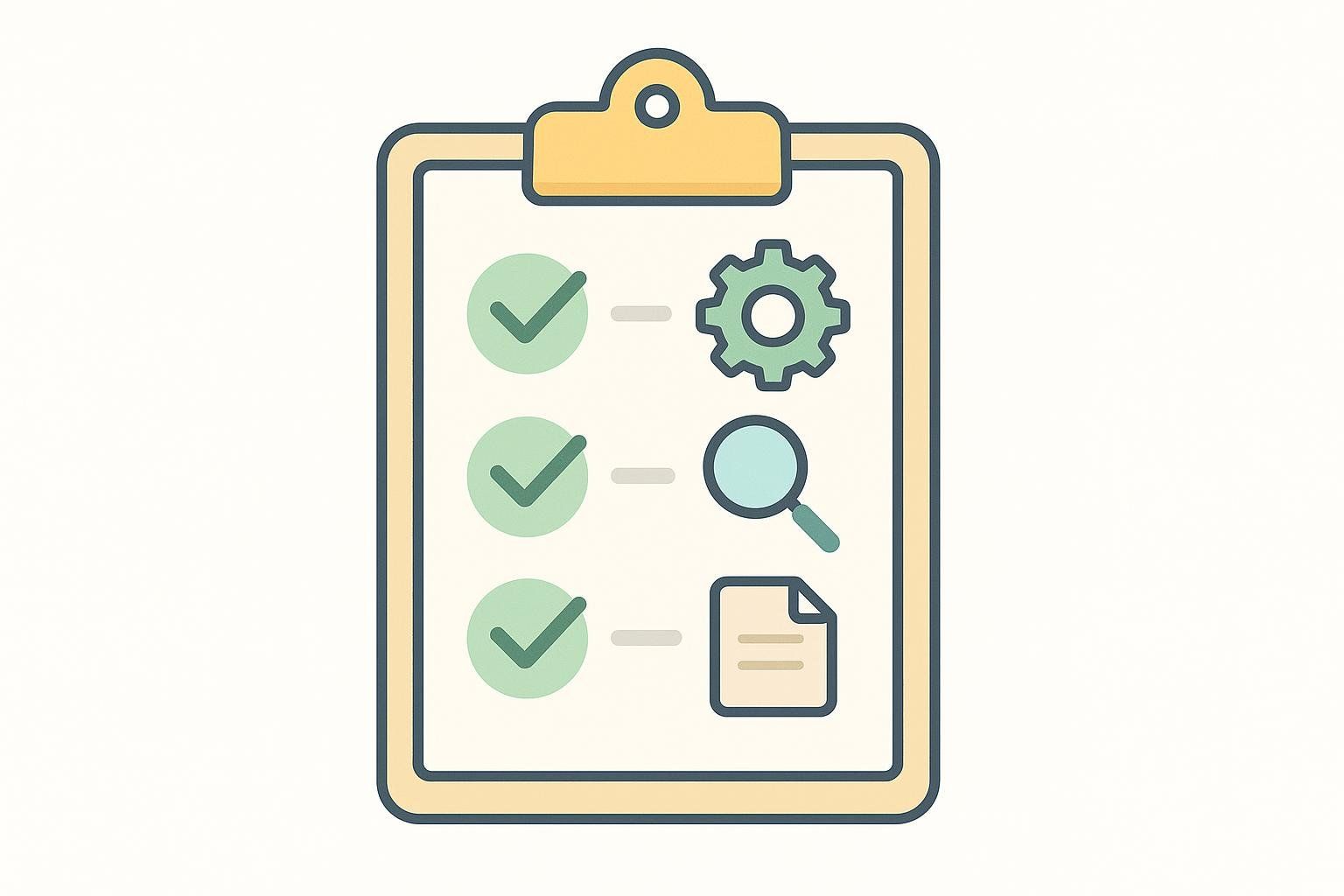
- Clinical workflow: DXA order sets, FRAX integration, and VFA criteria.
- QA program: Daily phantom checks, documented LSC, periodic cross‑calibration.
- Reporting: Standardized T‑/Z‑score language, fracture‑risk context, follow‑up intervals.
- Billing: Correct CPT/ICD‑10 pairing and frequency rules per payer policy.
- Patient education: Prep instructions (calcium hold, clothing), safety one‑pager.
Reference: ISCD Official Positions for acquisition/analysis standards and monitoring.
FAQs
-
Which bone densitometer is “best” for diagnosing osteoporosis?
Central DXA of the hip and spine is the standard clinical method for diagnosis and monitoring (Mayo Clinic; Johns Hopkins). -
Does ultrasound replace DXA?
No. Ultrasound is great for screening and portability, but it’s not a substitute for central DXA when you need to make treatment decisions (systematic review of heel QUS). -
How much radiation does a DXA use?
Very little—on the order of everyday background exposure (IAEA primer). -
Can a DXA report show vertebral fractures or cardiovascular risk markers?
Many systems support VFA and can visualize Abdominal Aortic Calcification (AAC) on lateral views; availability and analysis depend on the platform (Hologic Horizon features). -
DXA or DEXA—what’s correct?
Professional groups now prefer DXA (not “DEXA”), per the International Society for Clinical Densitometry; you’ll see both terms used (ISCD Official Positions).
Key takeaways
- “Bone densitometer” is a category, not a single device. For diagnosis and monitoring, central DXA is the standard; ultrasound and peripheral devices help with screening; QCT is reserved for select cases.
- DXA scans are very safe. They use extremely low radiation, while ultrasound uses none.
- A simpler experience leads to better decisions. Clear prep, fast exams, and understandable reports—paired with tools like FRAX—make next steps easier.
- BodySpec scans are non‑diagnostic. If your whole‑body DXA bone estimate looks low, bring it to your doctor to discuss a diagnostic hip/spine DXA.
Want a friendly walkthrough—or to benchmark your own bone and body composition? Explore these resources:
